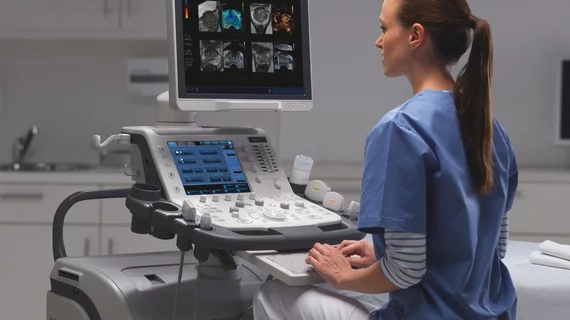Ultrasound-guided procedure offers promising alternative to opioids for managing pain
Using ultrasonography-guided nerve blocks (UGNBs) for pain management has been growing in popularity in recent years as experts search for ways to temper the opioid epidemic. However, some departments are hesitant to adopt the procedure.
The authors of a new paper in JAMA suggest that this is due, in part, to an uncertainty regarding complications, a lack of procedural training and questions about how effective UGNBs are in emergency settings. Now, the results of a new analysis may help to provide answers to concerns about safety.
“Ultrasonography-guided nerve blocks are a critical component of multimodal analgesia across medical specialties. Along with offering optimal analgesia and reducing the reliance on opioids, these procedures can reduce healthcare–associated complications,” corresponding author Andrew Goldsmith, MD, with the Department of Emergency Medicine at Lahey Hospital and Medical Center, and colleagues note. “UGNBs have become a staple of both perioperative pain control and chronic pain management in outpatient clinics.”
After assessing thousands of UGNBs conducted in emergency departments between Jan. 1, 2022, and Dec. 31, 2023, researchers found minimal evidence of procedural complications. In fact, out of 2,735 UGNB encounters, just 10, or 0.4%, experienced an issue related to the procedure and there were no long-term adverse effects. Most of the complications were related to feelings of post-procedure weakness.
What’s more, the procedure was extremely effective for managing pain. The majority of patients (71%) reported 51% to 100% pain relief after the nerve block. In this study, fascia iliaca blocks were the most common USNB performed—these are often utilized in cases of hip or femur fractures.
The authors suggest that nerve block failures or complications are likely attributable to provider experience. Many of the providers conducting the procedures in this study were residents, indicating that training strategies targeted at this group could further improve utilization.
“Data from this registry support the scaling of UGNB training and performance across EDs nationally,” the group notes. “The findings advocate the widespread adoption of UGNB training and practice across acute care settings, offering a promising avenue for multimodal analgesia strategies that potentially would reduce opioid use and improve patient care.”
The study abstract is available here.

